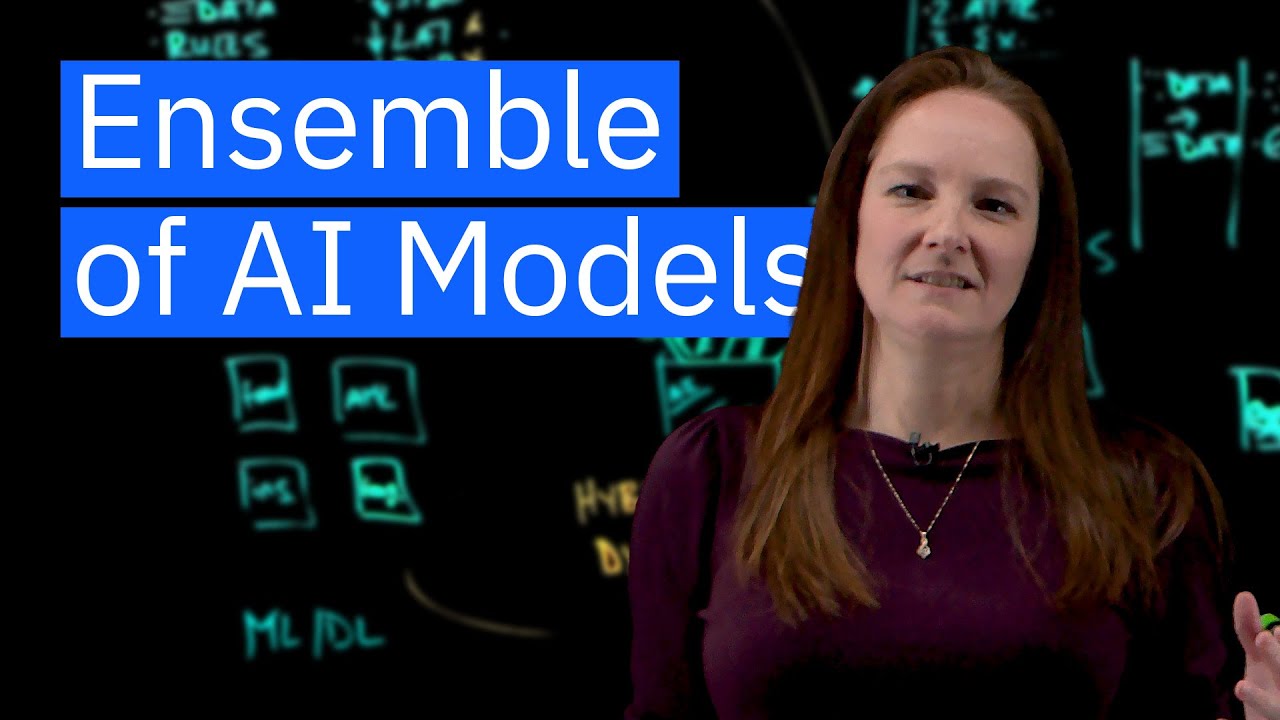The video discusses the importance of using an ensemble of AI models to maximize business value by leveraging the strengths of both traditional AI and large language models (LLMs) for various applications. It highlights a hybrid approach that allows organizations to dynamically switch between models based on specific needs, illustrated through use cases in fraud detection and insurance claim analysis.
The video discusses the growing importance of artificial intelligence (AI) in business and introduces a new approach that leverages an ensemble of AI models to maximize the value derived from various AI tools. As innovations in AI continue to emerge, it becomes essential for businesses to adapt their strategies dynamically. The speaker outlines a framework for understanding different AI models, their attributes, and how to effectively utilize them based on specific situations.
The first part of the framework focuses on traditional AI, which is primarily built on machine learning and deep learning models. Traditional AI excels in processing structured data, following predefined rules to make predictions while providing confidence ratings. This type of AI is commonly used in applications such as fraud detection, anti-money laundering, insurance claim analysis, and medical image analysis. Its strengths include smaller model sizes, lower latency, and greater energy efficiency, making it suitable for real-time applications.
In contrast, large language models (LLMs) are introduced as another tool in the AI toolbox. These models, which include encoder and decoder architectures, can handle both structured and unstructured data. Encoder models can convert unstructured data into structured formats, while decoder models generate new data, such as in chatbots. Although LLMs tend to be more accurate, they also require more power and have higher latency compared to traditional AI models. The speaker emphasizes the importance of understanding the strengths and weaknesses of each model type to determine when to use them.
The video highlights the benefits of a hybrid approach that combines multiple AI models to leverage their respective strengths. By dynamically switching between models based on the situation—whether prioritizing accuracy, speed, or energy efficiency—businesses can achieve optimal predictions. This flexibility allows organizations to adapt their AI strategies to meet specific needs and challenges in real-time.
To illustrate this approach, the speaker provides two use cases: fraud analysis in the financial industry and insurance claim analysis. In the fraud detection scenario, traditional AI can quickly assess transactions for potential fraud, while LLMs can be employed for more complex cases requiring higher accuracy. In the insurance claims example, LLMs can process unstructured data to enhance structured data analysis, demonstrating the power of multimodal AI environments. Overall, the video emphasizes the value of using an ensemble of AI models to maximize the potential of AI in business applications.
